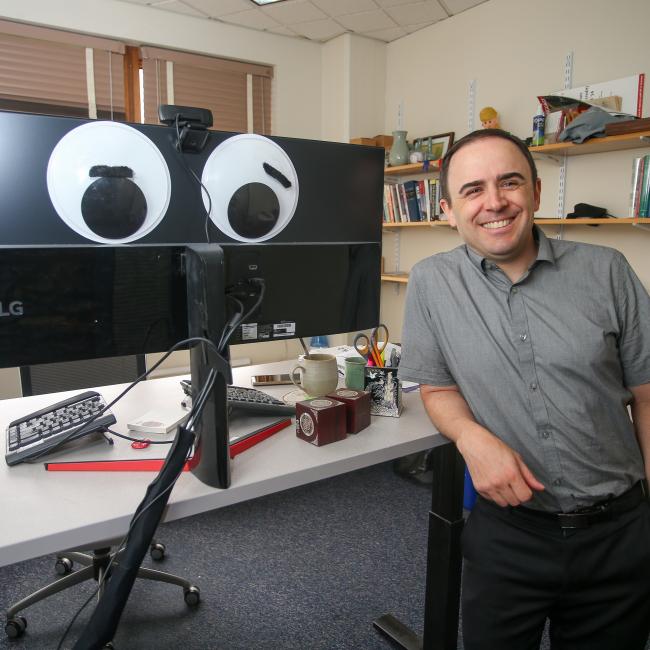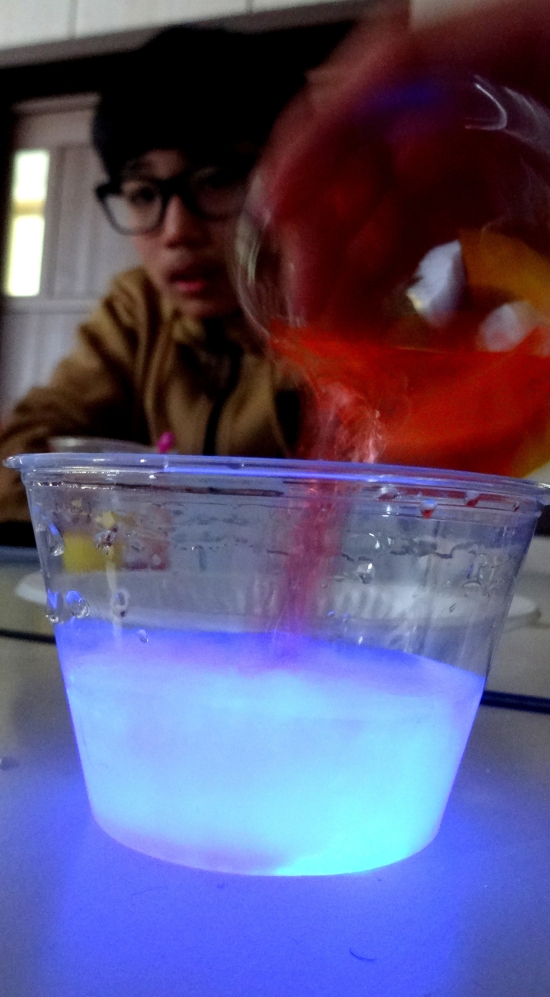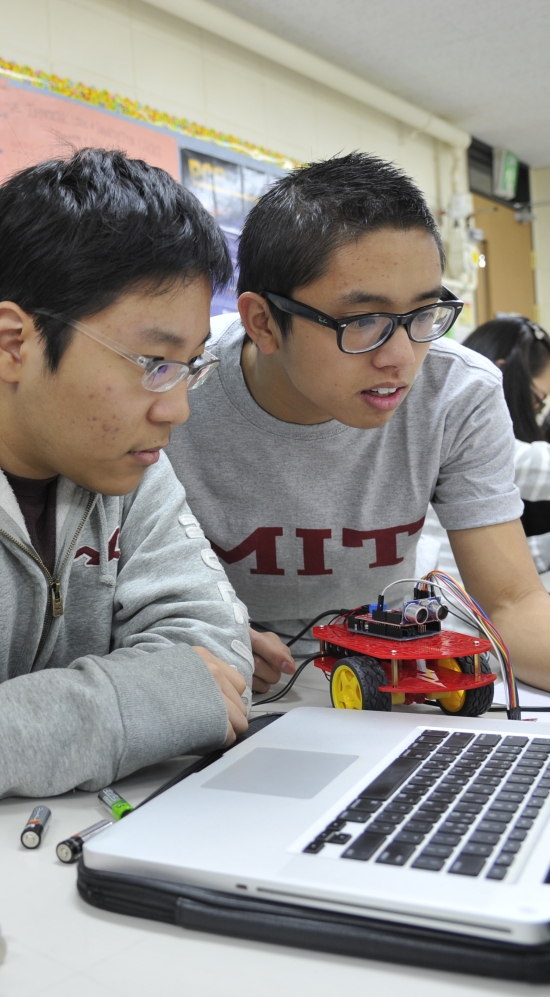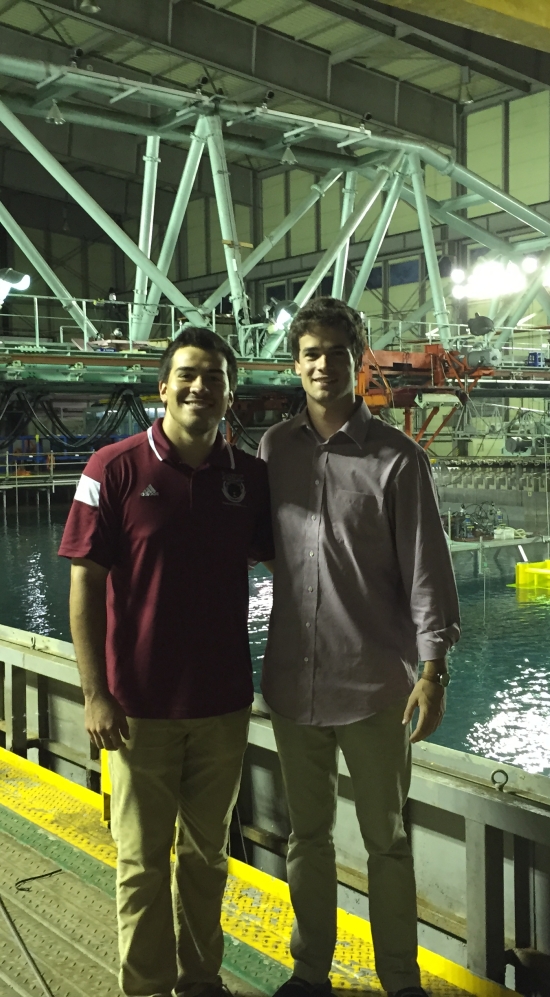Korea has become a global powerhouse of science and technology within a few short decades. Korean companies, research institutes, and universities are at the cutting edge of research and innovation in electronics, telecommunications, chemicals, automobiles, energy, shipbuilding, robotics, and more. The Jae S. Lim MISTI Korea Program empowers MIT students and faculty to advance knowledge and solve the world’s great challenges by connecting them with leading companies, researchers, university faculty, and other partners in Korea.
Program Opportunities
Internships
MISTI’s award-winning international internship program provides a one-of-a-kind, world-class experience for MIT students: the opportunity to gain real-life work experience in leading companies and labs around the world. Best of all, internships are fully funded, including airfare.
MISTI Korea matches and trains MIT students for internships at leading companies and research institutes in Korea. Internships last from 3 to 12 months and are open to MIT undergraduates, graduating seniors, and graduate students in all disciplines.
Undergraduate and graduate students in any class year or major that are willing to fulfill the following requirements before the internship start date may apply:
Language
- Undergraduate students: complete Korean IV (21G.904) OR have similar proficiency.
- Graduate students: completing Korean II (21G.902) OR similar proficiency is recommended, but this may be waived depending on needs of internship hosts that match student interests.
MIT Global Languages offers Korean I, III, and V during fall semester, Korean I during IAP, and Korean II, IV, and VI during spring semester. See here for more information.
Students who have not taken Korean courses at MIT but feel their proficiency meets or exceeds the above requirements can demonstrate proficiency in the interview that's required during the application process.
Training
- Complete 6-7 MISTI Korea training and preparation sessions (1-1.5 hrs each) in March/April.
- 1st Year Students: Complete UROP or similar experience prior to internship start date.
GPA
- ≈4.0 or above
Courses
No courses are required beyond the language requirement above, but the following culture courses are recommended:
- Gateway to Korean Literature and Culture (21G.066 / 21L.491)
- Introduction to East Asian Cultures: From Zen to K-Pop (21G.030 / 21G.193 / WGS.236)
- Foundations of East Asian Literature and Culture: From Confucius to the Beats (21G.141 / 21G.041 / 21L.040)
- How Culture Works (21A.01)
- Teaching and Learning: Cross-Cultural Perspectives (21A.150)
- Language, Communication, and Culture (21A.151)
All basic expenses are funded, including airfare, housing, and a stipend to cover living expenses. Many internships are also competitively paid.
For summer internships:
- Dec 1: Deadline to complete MISTI Launchpad Application for priority placement
- Late applications are accepted up to Feb. 28 if there are remaining placements at internship hosts, but host selection will be limited.
- Dec 15: Deadline to finish MISTI Korea application for priority placement, including interviewing with MISTI Korea Managing Director, selecting up to 3 internship hosts of interest, and submitting cover letters for each.
- Dec – Jan: Internship hosts review interested students and interview select applicants.
- Jan – Feb: Most hosts send internship offers to students between late January and the end of February.
- Mar – May: Mandatory training and preparation sessions.
- Most internships take place in summer for 8-12 weeks, starting in early/mid-June and ending in mid/late-August.
Longer internships of 3-12 months with flexible start/end dates outside summer are also available. Contact MISTI Korea Managing Director at least 3 months before anticipated internship start date to apply.
Global Teaching Labs
MISTI Korea's Global Teaching Labs offer a unique opportunity for MIT students to learn by teaching and share MIT's "mens et manus" approach with Korean students while learning from Korea's extraordinary education passion.
We're working to promote Korean middle/high school students’ motivation for STEM learning and helping them build a strong foundation for lifelong education and high career aspirations. In other words, we encourage students to love learning and dream big!
MIT students work in a teams of 2-4 to design STEM-focused workshops and teach STEM-related classes, emphasizing MIT's "Mens et Manus" approach and using hands-on activities (experiments, demonstrations, etc.). With emphasis on disadvantaged student populations, teams are placed at one of several potential hosts, including an alternative school for North Korea escapees, an education foundation, and an international school. Each host has specific needs that inform MISTI Korea's selection of applicants and organization of teams.
[Work2] Future Lab x MIT GTL from Future Lab on Vimeo.
"All physical theories . . . ought to lend themselves to so simple a description that even a child could understand them." -- Albert Einstein
WHAT WE NEED . . .
- Sophomores or older (including graduate students) in any course with a passion and talent for hands-on teaching/learning and ability to excite about STEM concepts (with or without prior teaching experience) both in front of classroom and 1-on-1
- Readiness to commit full-time to host school and project during IAP and spend several hours/week during semester from Oct to Dec to develop workshops (see "preparation" below)
- Ability to lead and manage class of 10-20 as well as guide and mentor individuals
- Adaptability to diverse team and unfamiliar work and living arrangements in new culture
- Willingness to commit to participating in MISTI Korea GTL for 2 consecutive years is valued
- Substantive experience teaching beginner-level English speakers is valued
LANGUAGE
Korean language ability is NOT required for most placements, but we encourage students with any level of Korean ability to apply. (Check out Korean language courses at MIT.)
We need 5-6 advanced Korean speakers for placements at several hosts schools. We also need 3-4 advanced Mandarin Chinese speakers for select placements.
GPA
Approximately 4.0 or better is required.
We've got you covered for all necessities: economy airfare, shared housing, and stipend for basic living expenses.
- Aug 27: Application opens
- Sept 11, 6-7 pm: MISTI Korea Info Session in 10-105
- Sept 17, 11:59 pm: Application deadline (late applications NOT accepted)
- Sept 18 - 25: Applications reviewed; select students contacted for interview
- ~Sept 26-29: Acceptance notifications with school and team placement details sent
- ~Sept 28-30: Written commitment from accepted students due
- Oct - Jan:
- From the time you're accepted in Oct until you arrive in Korea in Dec/Jan (possibly including time during holiday vacations), your team will meet frequently and you'll also work independently to brainstorm ideas, prepare lesson plans, and procure and test materials. Teams will also coordinate with in-country partners and host school teachers. You also must commit to attending 3-4 training sessions in Oct/Nov/Dec on teaching skills and Korean culture and education.
- Jan:
- GTL projects run about 3-4 weeks in January--likely starting between 12/30 - 1/7 and ending 1/14 - 1/29, depending on specific school placement.
Meet Your Program Manager

Get in touch with Matt Burt, Managing Director for MIT-Korea, to get your questions answered.



